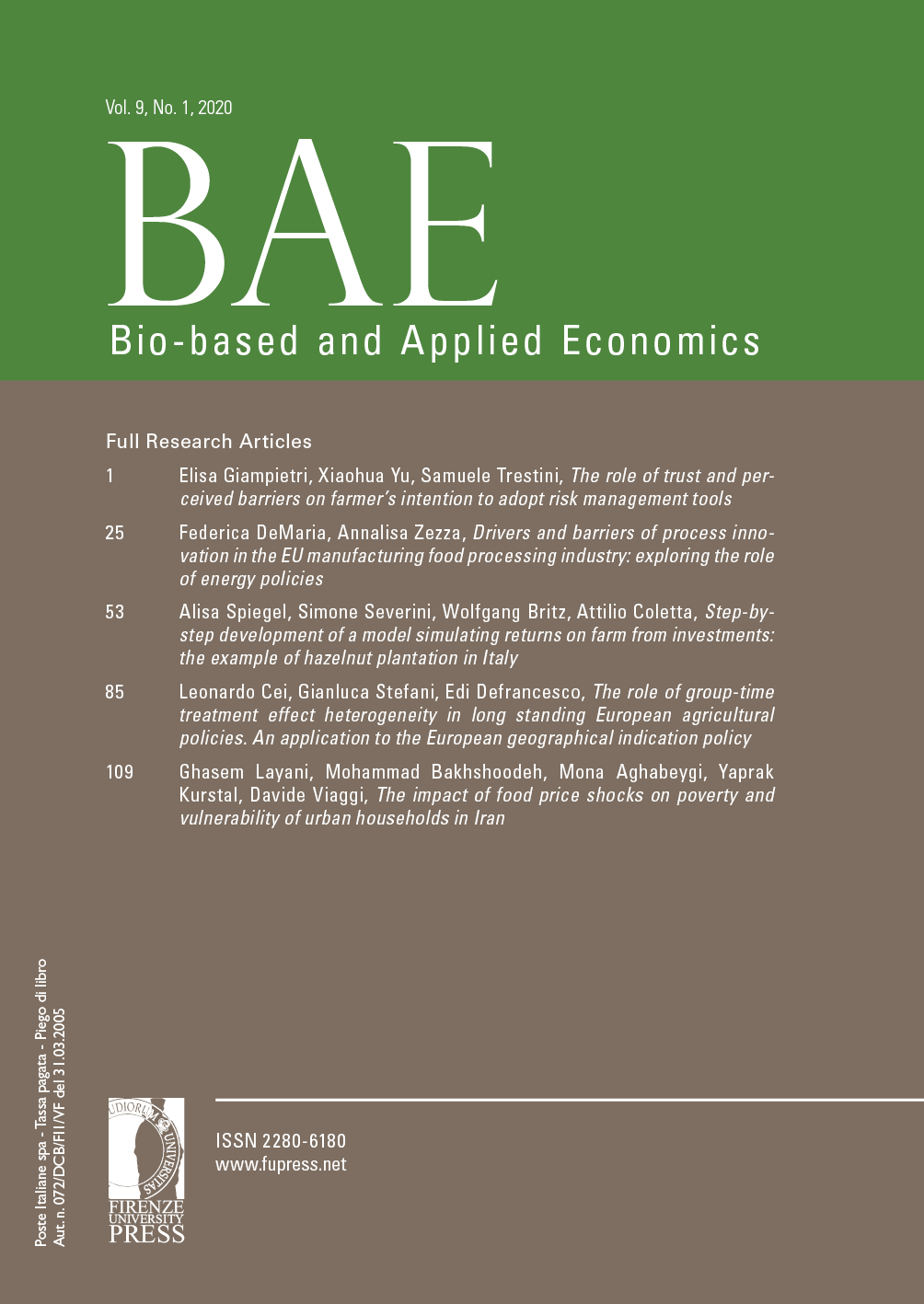Published 2020-11-05
Keywords
- Compensating Variation (CV),
- Quadratic Almost Ideal Demand System (QAIDS),
- welfare effect,
- vulnerability,
- food price shocks
How to Cite
Abstract
The aim of this paper is to assess the welfare effects of food price changes on urban households’ poverty and vulnerability. This is achieved by using Hicksian price Compensating Variation (CV) and compensated price elasticities, based on Quadratic Almost Ideal Demand System (QAIDS). The study includes in total eight food groups (cereals, meats, dairy, cooking oil, sugar, fruits, vegetables, and tea and coffee) and encompasses 18852 urban households. The results showed that the welfare index for food groups was 20 USD (2.52% of the monthly average income of urban households). After increasing food prices, based on the poverty line, 41% of urban households were observed to be below the poverty line and the number of poor households increased by 10.63%. To enable food security and to execute food safety goals, the Iranian government should compensate for the welfare losses by supportive policies such as direct subsidy payments to vulnerable households.






